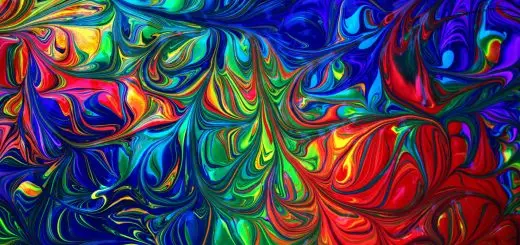Key Teachings and Beliefs of Gnosticism

Looking for more amazing products? Check out our online store and explore our collection here! Happy shopping!
Before diving in, please note: This post is for informational purposes only. If you’d like to know more about how we approach topics, feel free to check out our friendly Disclaimer Page.
Hey there, amazing readers! 
We’re committed to delivering quality posts, and your support (even just sticking around despite the ads) means everything to us. So, bear with us, and thanks for helping us keep the good vibes rolling. Now, on to the fun stuff!
TRANSLATE BUTTON AT THE END OF THE ARTICLE
Introduction to Gnosticism
Gnosticism is a fascinating and intricate belief system that emerged in the early centuries of Christianity.
It encompasses a diverse collection of religious ideas and philosophies that challenge the orthodox views of Christianity.
The term "Gnosticism" is derived from the Greek word "gnosis," meaning knowledge.
Gnostics believe that salvation comes through a secret knowledge or insight into the nature of existence rather than through faith alone.
This esoteric knowledge is believed to liberate individuals from the constraints of the material world and lead them to a higher spiritual realm.
Dualism and the Material World
One of the key teachings of Gnosticism is dualism, the belief in the existence of two opposing forces: the spiritual realm of light and the material realm of darkness.
Gnostics view the material world as fundamentally flawed and corrupt, created by a lower deity known as the Demiurge.
This Demiurge is often portrayed as a misguided or malevolent being who traps human souls in physical bodies, leading to suffering and ignorance.
Gnostics seek to transcend the material world through spiritual enlightenment and return to the divine realm of light.
The Role of Gnosis in Salvation
Central to Gnostic belief is the concept of gnosis, or spiritual knowledge, as the key to salvation.
Gnostics believe that through the pursuit of this hidden knowledge, individuals can awaken to their true spiritual nature and escape the cycle of rebirth and suffering.
Gnosis is not acquired through traditional learning or study but through personal revelation and mystical experience.
It is seen as a direct connection to the divine that transcends intellectual understanding.
Demiurge and the Creator God
In Gnostic cosmology, the Demiurge is the creator of the material world, often depicted as a lesser deity who mistakenly believes himself to be the supreme God.
This Demiurge is responsible for trapping human souls in physical bodies and keeping them ignorant of their true spiritual nature.
In contrast, the true transcendent God of the Gnostics is beyond the material realm and is associated with the divine light and wisdom that leads to salvation.
The Belief in Divine Spark
Gnostics believe that every human being possesses a divine spark or seed of light within them, a remnant of the true God that longs to return to the spiritual realm.
This divine spark is what connects individuals to their higher spiritual nature and enables them to seek liberation from the material world.
Through spiritual practices such as meditation, prayer, and contemplation, Gnostics aim to awaken this inner spark and realize their true identity as spiritual beings.
Rejection of Orthodox Christianity
One of the defining characteristics of Gnosticism is its rejection of mainstream or orthodox Christian beliefs.
Gnostics view the teachings of the church as overly simplistic and dogmatic, lacking the depth and complexity of their own mystical insights.
They often interpret biblical stories and figures in symbolic and allegorical ways, seeing them as representations of deeper spiritual truths rather than literal historical events.
This divergence from traditional Christian doctrine has led to Gnosticism being labeled as heretical by many early church leaders.
The Concept of Aeons
In Gnostic cosmology, aeons are divine emanations or beings that exist in the spiritual realm and embody various aspects of the transcendent God.
These aeons are often arranged in pairs or syzygies, representing complementary forces such as wisdom and understanding, or mercy and judgment.
Together, they form a divine hierarchy that governs the spiritual universe and guides human souls towards enlightenment and salvation.
Each aeon contributes to the overall harmony and balance of the divine realm.
The Importance of Secret Knowledge
Central to Gnostic practice is the belief in secret or hidden knowledge that is revealed only to those who are spiritually prepared to receive it.
This esoteric wisdom is said to unlock the mysteries of existence and lead individuals to a deeper understanding of themselves and the universe.
Gnostics often use symbolic language, myths, and rituals to convey these mystical teachings, passing them down through oral traditions and written texts known as Gnostic scriptures.
The pursuit of this secret knowledge is seen as essential for achieving spiritual liberation and union with the divine.
The Role of Sophia
In Gnostic mythology, Sophia is a central figure representing divine wisdom and the feminine aspect of the divine.
She is often portrayed as a goddess who plays a crucial role in the creation of the material world and the redemption of human souls.
Sophia’s quest for knowledge and understanding leads her to a tragic fall from the divine realm, resulting in the flawed creation of the material cosmos.
Despite this, Sophia remains a guiding light for Gnostics, symbolizing the pursuit of wisdom and the path to spiritual enlightenment.
The Myth of the Fallen Sophia
According to Gnostic tradition, Sophia’s fall from grace symbolizes the loss of divine wisdom and the descent into ignorance and suffering in the material world.
Her misguided attempt to create without the consent of the true God leads to the formation of the Demiurge and the flawed nature of earthly existence.
Gnostics see Sophia’s story as a cautionary tale about the dangers of spiritual pride and the consequences of straying from the path of true enlightenment.
Through her redemption and eventual return to the divine realm, Sophia embodies the hope for humanity’s eventual salvation and reunion with the divine.
The Doctrine of Docetism
Another important aspect of Gnostic belief is the doctrine of Docetism, which asserts that the physical body and material world are not real or substantial but merely illusions or appearances.
Gnostics believe that the physical world is a distorted reflection of the true spiritual reality and that human bodies are temporary vessels for the immortal soul.
This belief in the unreality of the material realm leads Gnostics to emphasize the importance of transcending the body through spiritual practices and cultivating a deeper awareness of the divine within.
Gnostic Views on the Afterlife
Gnostics hold a complex and multifaceted view of the afterlife, often influenced by their beliefs in dualism, salvation through gnosis, and the role of divine beings.
While specific details may vary among different Gnostic sects, there are common themes that emerge in their teachings about the fate of the soul after death.
Gnostics generally believe in a process of spiritual transformation and liberation that continues beyond physical death, with souls journeying through various realms and encountering different spiritual beings before ultimately returning to the divine source.
The afterlife is seen as a continuation of the soul’s quest for enlightenment and union with the divine, guided by the knowledge and wisdom gained during earthly existence.
Conclusion
In conclusion, Gnosticism offers a unique and profound perspective on spirituality, salvation, and the nature of reality.
Its teachings on dualism, gnosis, the Demiurge, divine spark, and secret knowledge challenge conventional Christian beliefs and invite seekers to explore deeper dimensions of existence.
The myths of Sophia, the concept of aeons, and the doctrine of Docetism provide rich symbolism and allegory that illuminate the path to spiritual enlightenment and liberation.
Gnosticism’s complex views on the afterlife reflect its emphasis on the eternal journey of the soul towards reunion with the divine.
By delving into the teachings and beliefs of Gnosticism, one can gain a deeper understanding of the mysteries of the universe and the inner workings of the human spirit.

The Enlightenment Journey is a remarkable collection of writings authored by a distinguished group of experts in the fields of spirituality, new age, and esoteric knowledge.
This anthology features a diverse assembly of well-experienced authors who bring their profound insights and credible perspectives to the forefront.
Each contributor possesses a wealth of knowledge and wisdom, making them authorities in their respective domains.
Together, they offer readers a transformative journey into the realms of spiritual growth, self-discovery, and esoteric enlightenment.
The Enlightenment Journey is a testament to the collective expertise of these luminaries, providing readers with a rich tapestry of ideas and information to illuminate their spiritual path.
Our Diverse Expertise
While our primary focus is on spirituality and esotericism, we are equally passionate about exploring a wide range of other topics and niches 

To ensure we provide the most accurate and valuable insights, we collaborate with trusted experts in their respective domains 
Our blog originally focused on spirituality and metaphysics, but we’ve since expanded to cover a wide range of niches. Don’t worry—we continue to publish a lot of articles on spirituality! Frequently visit our blog to explore our diverse content and stay tuned for more insightful reads.
Hey there, amazing reader! 
Check out our store here and take a peek at some of our featured products below! Thanks for being awesome!











